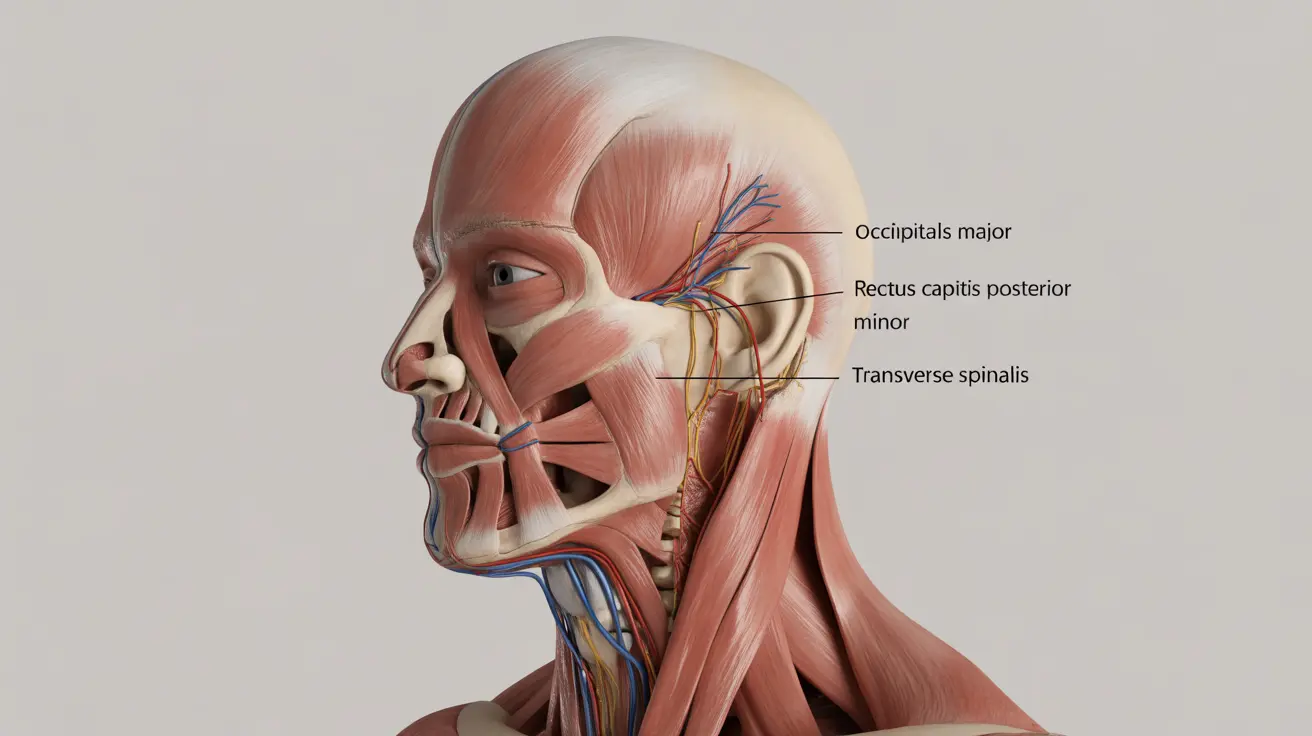Suboccipital headaches, characterized by pain at the base of the skull, can significantly impact daily life and overall well-being. These distinctive headaches originate in the suboccipital region, where important muscles and nerves connect the skull to the upper spine. Understanding their causes, symptoms, and treatment options is crucial for finding effective relief.
While many people experience occasional head pain, suboccipital headaches have specific characteristics that set them apart from other types of headaches. Learning to recognize these unique features can help you seek appropriate treatment and implement effective management strategies.
Understanding Suboccipital Headaches and Their Causes
Suboccipital headaches typically develop due to tension or strain in the muscles and soft tissues at the base of the skull. Common triggers include:
- Poor posture, especially forward head posture
- Extended screen time and desk work
- Stress and anxiety
- Muscle tension from physical activities
- Cervical spine issues
- Sleep position problems
People who spend long hours at computers, have physically demanding jobs, or experience high stress levels are particularly susceptible to developing these headaches. The constant strain on neck muscles and poor ergonomics can create a cycle of tension and pain.
Recognizing the Symptoms
Suboccipital headaches present with distinct characteristics that help differentiate them from other headache types:
- Dull, aching pain at the base of the skull
- Tension in the upper neck muscles
- Pain that may radiate to the back of the head
- Increased discomfort with neck movement
- Tenderness when touching the affected area
- Potential limitation in neck range of motion
Diagnostic Process and Medical Evaluation
Healthcare providers typically diagnose suboccipital headaches through a combination of physical examination and patient history. During the evaluation, they may:
- Assess neck range of motion
- Check for tender points in the suboccipital region
- Evaluate posture and muscle strength
- Review medical history and lifestyle factors
- Order imaging tests if necessary to rule out other conditions
Treatment Approaches
Treatment for suboccipital headaches often involves a multi-faceted approach:
Medical Interventions
Healthcare providers may recommend:
- Pain relief medications
- Muscle relaxants when appropriate
- Physical therapy
- Trigger point injections
- Nerve blocks in severe cases
Physical Therapy and Exercise
Therapeutic approaches often include:
- Gentle stretching exercises
- Strengthening of neck muscles
- Posture correction techniques
- Manual therapy
- Therapeutic massage
Prevention and Lifestyle Modifications
Several lifestyle changes can help prevent and manage suboccipital headaches:
- Maintaining good posture
- Taking regular breaks from computer work
- Using ergonomic office equipment
- Practicing stress management techniques
- Ensuring proper sleep position
- Regular exercise and stretching
- Staying hydrated
Frequently Asked Questions
What causes a suboccipital headache and who is most likely to get one?
Suboccipital headaches are primarily caused by muscle tension and strain in the neck and base of the skull. Office workers, people with poor posture, and those experiencing high stress levels are most likely to develop these headaches.
What do suboccipital headaches feel like and how are they different from migraines?
Suboccipital headaches typically present as a dull, aching pain at the base of the skull, often accompanied by neck tension. Unlike migraines, they usually don't cause sensitivity to light or sound and rarely include nausea or visual disturbances.
How is a suboccipital headache diagnosed and what tests might a doctor order?
Diagnosis typically involves a physical examination, medical history review, and assessment of neck mobility. Doctors may order imaging tests like X-rays or MRI scans to rule out other conditions if necessary.
What are the best treatment options for suboccipital headaches?
The most effective treatments include a combination of pain management, physical therapy, postural correction, and stress reduction techniques. Some people may benefit from medication, manual therapy, or trigger point injections.
Can lifestyle changes or home remedies help prevent or relieve suboccipital headaches?
Yes, lifestyle modifications such as improving posture, regular exercise, stress management, and proper ergonomics can significantly help prevent and relieve suboccipital headaches. Simple home remedies like gentle stretching, heat therapy, and self-massage may also provide relief.




